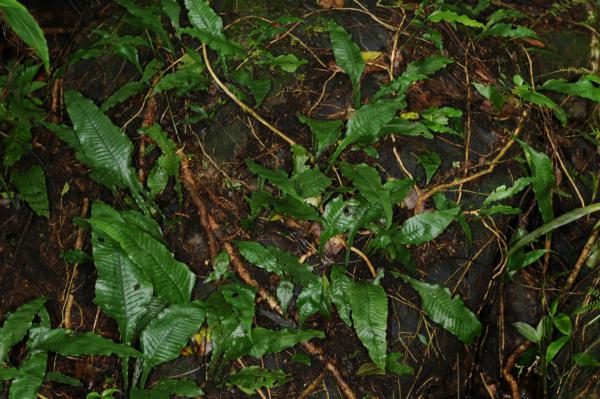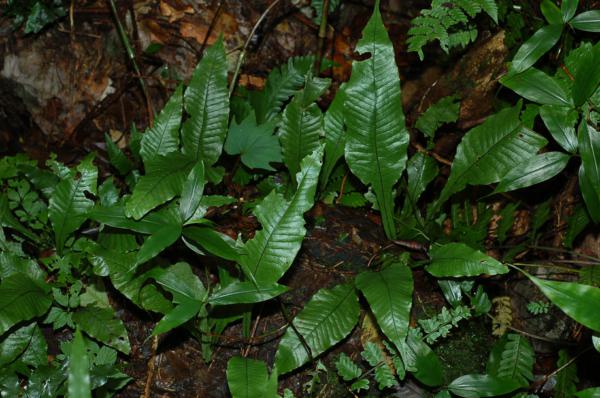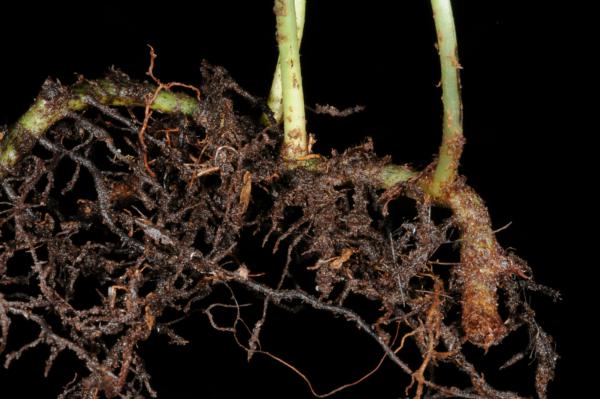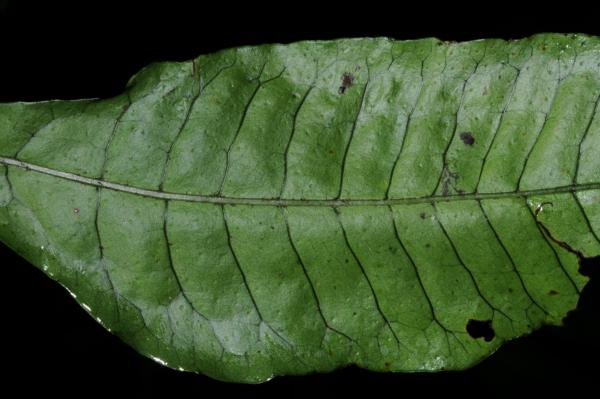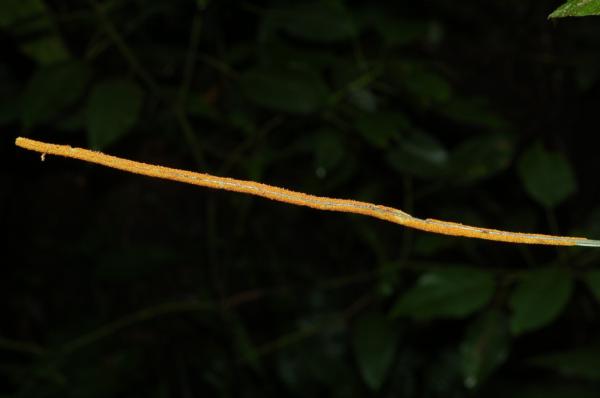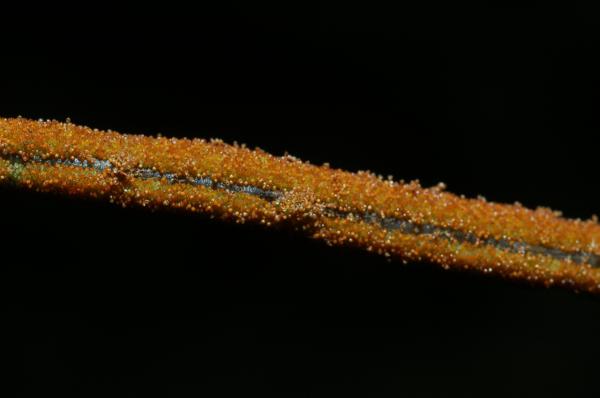
Leptochilus decurrens Blume
Family
Polypodiaceae
Nomenclature
Leptochilus decurrens Blume, Enum. Pl. Javae: 206. 1828; Ching, Bull. Fan Mem. Inst. Biol. 4: 345. 1933; Tardieu & C.Chr., Fl. Indo-Chine 7(2): 502. 1941; Holttum, Rev. Fl. Malaya ed. 1, 2: 164, f. 74. 1955 [‘1954’]; Tagawa, J. Jap. Bot. 38: 328. 1963; Tagawa & K.Iwats., SouthE. Asian Stud. 5: 55. 1967; Tagawa & K.Iwats., Fl. Thailand 3: 542, f. 54.7. 1989; Nooteboom, Blumea 42: 279. 1997; Nooteboom, Fl. Males., Ser. II, Ferns and Fern Allies 3: 83. 1998; Boonkerd & Pollawatn, Pterid. Thailand: 276. 2000; Newman et al., Checkl. Vasc. Pl. Lao PDR: 30. 2007. – Type: Blume s.n. (L).
Acrostichum variabile Hook., Sp. Fil. 5: 277. 1864; Hosseus, Beih. Bot. Centr. 28(2): 363. 1911. – Gymnopteris variabilis (Hook.) Bedd., Ferns Brit. India: t. 272. 1868; Bedd., Handb. Ferns Brit. India: 429, f. 258. 1883.
Description
Rhizome long creeping, 2.5–3 mm diam., bearing fronds to 1 cm apart, scaly throughout; scales pseudopeltate, narrowly ovate or triangular, gradually narrowing from base towards long-attenuate apex, 2–3(–5) by 0.3–1 mm, distinctly clathrate, concolorously brown, margin minutely toothed. Fronds dimorphic. Sterile fronds: stipes up to 0–15(–18) cm long, more or less winged at least in the upper part, sparsely scaly in lower portion, stramineous; laminae oblong to oblong-lanceolate, broadest near base, round or broadly cuneate at base and decurrent downwards to form wings of stipes, gradually narrowing upwards and then caudately acuminate at apex, up to 10–30(–50) by 2.5–11 cm, entire or irregularly undulate at margin; midrib raised on both surfaces; main lateral veins distinct, the other veins visible, forming copious areoles with forked or branched included free veinlets; dark green, dark in dried condition. Fertile fronds: stipes 14–40(–50) cm long, stramineous, wingless; laminae linear, up to 30 by 0.1–0.3(–1) cm broad, wholly covered by sporangia except on the midrib. Spores monolete .
Distribution in Thailand
NORTHERN: Mae Hong Son, Chiang Mai, Chiang Rai, Lamphun, Lampang, Phrae; NORTH-EASTERN: Phetchabun, Loei; SOUTH-WESTERN: Uthai Thani, Kanchanaburi; SOUTH-EASTERN: Chanthaburi; PENINSULAR: Nakhon Si Thammarat.
Distribution in Laos
[Ta-tom]
Wider Distribution
Sri Lanka, S India, N India, S China and Taiwan, Vietnam, throughout Malesia.
Ecology
Terrestrial, on moist rocks or on basal tree trunks usually in dense evergreen forests, rather common at medium to high altitudes throughout Thailand.
Proposed IUCN Conservation Assessment
Least Concern (LC). This species is widespread and not under any known threat.
Voucher specimens - Thailand
Middleton et al. 5167, Loei, Phu Luang Wildlife Sanctuary (E).
Habit
Habit
Rhizome and stipe bases
Upper sterile frond surface
Fertile frond
Sori
Site hosted by the Royal Botanic Garden Edinburgh. Content managed by Stuart Lindsay, Gardens by the Bay, Singapore and David Middleton, Singapore Botanic Gardens. Last updated 24 January 2012
